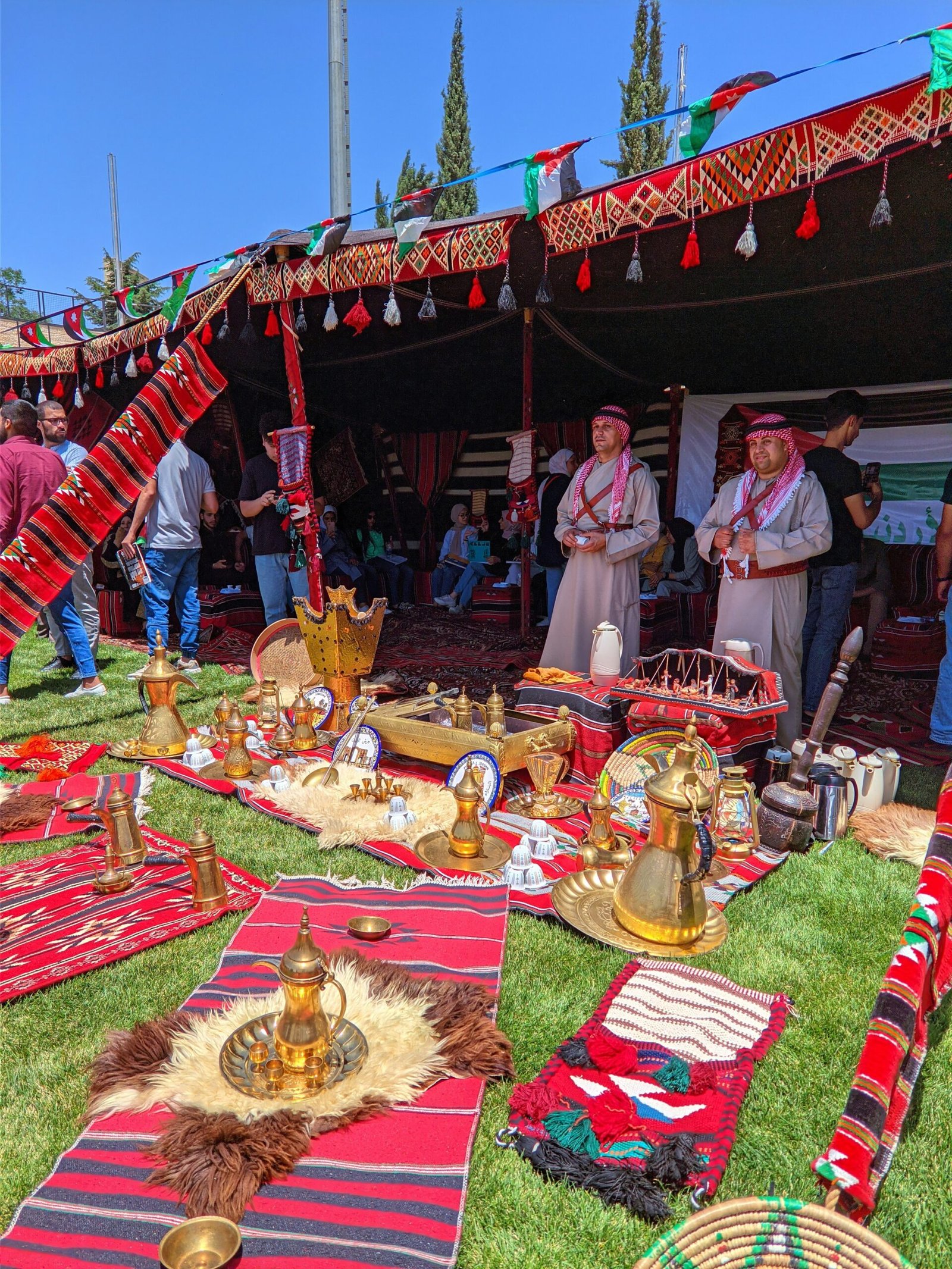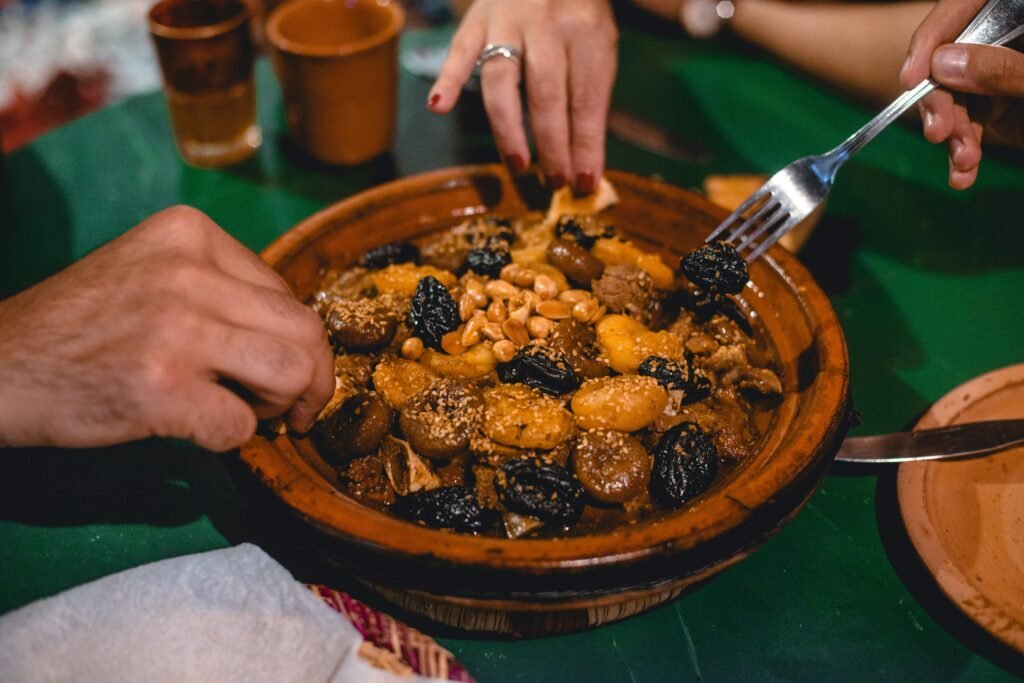Introduction to Central Asia’s Hospitality
The concept of hospitality in Central Asia is deeply woven into the fabric of its rich cultural heritage. This region, characterized by a tapestry of diverse ethnic groups and traditions, has long placed a high value on the warm reception of guests. For centuries, the practice of hospitality has served as a reflection of one’s social standing, generosity, and cultural identity, making it a defining aspect of Central Asian societies.

Historically, the nomadic lifestyle prevalent in Central Asia necessitated the development of unique hospitality customs. The vast expanses of steppes and deserts meant that travelers frequently embarked on long journeys across the region. As a result, providing shelter, food, and companionship to strangers became vital to survival. This tradition is encapsulated in centuries-old customs, such as the offering of a bowl of tea or a piece of bread to guests, signifying not only welcome but respect and goodwill.
In many Central Asian cultures, hospitality is considered a sacred duty, often referred to as “mehmondor” in Persian or “kydyz” in Kyrgyz. The act of hosting guests transcends mere obligation; it is celebrated through various ceremonies and rituals that highlight the importance of community, family, and honor. The generosity extended to visitors is not only a strong cultural trait but also serves to reinforce social bonds, ensuring that relationships are built and maintained through acts of kindness and sharing.
This commitment to hospitality resonates powerfully with travelers seeking authentic cultural experiences. Visitors to Central Asia often find themselves enchanted by the warm-heartedness of locals, who view them as part of an extended family rather than just transient guests. The unique practices of hospitality in this vibrant region not only offer a glimpse into the hearts of its people but also create lasting memories that captivate and inspire. By exploring these traditions, travelers can gain a deeper understanding of the values and narratives that shape Central Asia, making their journey all the more enriching.
The Essence of Warm Hospitality
Central Asia is renowned not only for its breathtaking landscapes and rich history but also for the distinctive hospitality of its people. Travelers often recount their encounters with local residents, who extend heartfelt welcomes that transcend mere politeness. Such hospitality is deeply woven into the cultural fabric of the region, where customs dictate that guests are treated with utmost respect and honor. This practice creates memorable experiences that resonate with visitors long after their journeys have ended.
One traveler, recounting her visit to Uzbekistan, described how a chance encounter in a bustling market turned into an invitation to share a meal with a local family. Despite their limited English, the warmth in their gestures conveyed a sense of belonging. The mother of the household prepared a traditional feast, introducing her guests to a variety of local dishes, each infused with unique flavors and accompanied by stories that highlighted the significance of each ingredient. Such experiences illustrate how Central Asian hospitality often makes visitors feel as though they are part of the family, revealing a warmth that is both genuine and inviting.
Similarly, a traveler in Kyrgyzstan shared his experience of staying in a yurt with a nomadic family. He described how the family’s openness, marked by shared laughter and storytelling, fostered a genuine connection that transcended cultural boundaries. Guests are typically invited to partake in ceremonies like the serving of kumis (fermented mare’s milk), which symbolizes trust and companionship. These moments reflect the region’s traditions, emphasizing the value placed on community, friendship, and hospitality.
Such anecdotes highlight the essence of Central Asian hospitality, where personal connections are forged through shared experiences. This warmth and appreciation for guests not only enrich travelers’ visits but also create lasting cross-cultural bonds that celebrate the region’s vibrant and welcoming spirit.
Traditional Tea Culture in Central Asia
Tea occupies a significant place in the cultural landscape of Central Asia, transcending mere refreshment to become a ritual steeped in tradition and social importance. This beverage is not just a staple drink; it embodies hospitality, community, and the intricate social codes of the region. In households across Kazakhstan, Uzbekistan, Kyrgyzstan, and Tajikistan, tea is often the first thing offered to guests, demonstrating warmth and welcome.

Various types of tea are enjoyed, with black tea being the most prevalent. Green tea and herbal infusions also appear frequently, reflecting local tastes and influences. However, the preparation and presentation of tea is what truly distinguishes Central Asian customs. Traditionally served in ornate teapots, it is often complemented by a variety of snacks, dried fruits, and sweets, creating an inviting tableau. The accompanying arrangements are elaborate, showcasing the host’s hospitality and improving the tea-drinking experience.
At social gatherings, tea rituals take on a communal aspect, emphasizing connection and conversation. The act of pouring tea, referred to as ‘chai’, is deliberate and performs a pivotal role in establishing bonds among participants. During this exchange, patrons are encouraged to partake in storytelling and sharing experiences, further solidifying their relationships. Additionally, the way tea is served can vary by region; for example, in some areas, it is customary to pour tea from a height, a technique believed to enhance flavor.
Through these various practices, the culture surrounding tea in Central Asia serves as a social glue that binds communities. Whether it is through the warmth of offering tea or the shared moments over a cup, its presence reflects the profound significance of hospitality in Central Asian societies. Ultimately, tea is not only a beverage but also a symbol of connection and warmth, perfectly encapsulating the essence of Central Asian culture.
Traditional Clothing and Its Hospitality Symbolism
The rich tapestry of traditional clothing in Central Asia not only reflects the region’s vibrant culture but also embodies the deep-rooted values of hospitality. Each piece of attire tells a story, woven from the threads of history, tradition, and familial pride. One of the most notable garments is the silk robe, often adorned with intricate embroidery that showcases the craftsmanship passed down through generations. These robes are not merely clothing; they are symbols of prestige and elegance, valued for their beauty as much as for their cultural significance.
During welcoming ceremonies, the local attire transcends its practical purpose and becomes a powerful expression of respect and honor towards guests. When hosts don their traditional garments, it signifies their commitment to upholding the principles of hospitality ingrained in their culture. Every stitch and design is a tribute to the guests, inviting them into a space where ancient traditions coalesce with modern warmth. The use of colors and patterns often carries connotations, representing not only regional identity but also the aspirations and values of the people.
In many ways, the traditional clothing of Central Asia serves as a living testament to the values of hospitality, encapsulating how deeply community ties intertwine with cultural expressions. The act of dressing in this manner is not merely a display of cultural heritage but a meaningful gesture that fosters understanding, respect, and connection among individuals from different backgrounds.

Guest of Honor: The Role of Guests in Local Culture
In Central Asia, the role of a guest is central to the ethos of local culture, intertwining hospitality, respect, and social bonding. When a visitor arrives, whether from a neighboring community or abroad, they are greeted with warmth and honor, symbolizing the importance that is placed on relationships and social connections. This concept of hospitality is deeply rooted in the nomadic traditions of the region, where sharing food and stories transcends mere sustenance, evolving into a profound ritual that solidifies bonds among individuals.
Guests are considered a blessing in Central Asian societies, which is reflected in the various customs associated with their visit. Upon arrival, it is common for hosts to greet their guests with elaborate traditional offerings, such as bread and salt, which symbolize respect and welcome. This initial act sets the tone for an enriching experience filled with communal meals and candid conversations. Such gatherings not only nourish the body but also serve as a platform for exchanging ideas, traditions, and even grievances, thereby fostering a deeper understanding between different cultures.
The responsibilities of guests, while less emphasized, are equally significant. Guests are expected to exhibit gratitude and respect towards their hosts, acknowledging the effort that has gone into their hospitality. This reciprocity encourages a harmonious relationship that enriches both parties. Additionally, guests are often invited to partake in local traditions, further enhancing their understanding of the societal fabric that binds the community together.
Ultimately, the role of a guest in Central Asia is much more than simply occupying physical space; it embodies a shared experience of generosity, respect, and cultural exchange. The rituals surrounding hospitality echo the rich history of the region, illustrating how these interactions continue to shape the social landscape today.
Culinary Delights and Their Significance in Hospitality
In Central Asia, food plays a pivotal role in hospitality, where the sharing of meals transcends mere sustenance to become a profound expression of cultural identity and warmth. Traditional dishes serve as a reflection of the rich history and diverse influences that have shaped the region over centuries. Hosts go to great lengths to prepare elaborate meals as a way to honor their guests, showcasing the availability of local ingredients and artisanal techniques that have been preserved and passed down through generations.
Among the most iconic dishes is plov, a fragrant rice dish commonly prepared with lamb, carrots, and spices. This dish is central to gatherings and celebrations, embodying a sense of community as it’s often served in large portions meant for sharing. The preparation of plov is a ritual in itself, requiring careful attention and craftsmanship, further solidifying its significance in the vis-à-vis between host and guest. Similarly, manty, which are large dumplings filled with meat and vegetables, are also representative of Central Asian hospitality, often enjoyed during family gatherings and celebratory events.
Moreover, the customs surrounding food preparation, presentation, and consumption reveal much about the values of Central Asian societies. For instance, guests are typically invited to sit at the head of the table, a sign of respect and an acknowledgment of their importance. Traditional drinks, such as kumis (fermented mare’s milk) or chai (tea), also play a crucial role in fostering connections. Sharing these beverages not only quenches thirst but also facilitates engaging conversations that deepen relationships between hosts and their visitors.
Ultimately, the culinary experiences offered in Central Asia are far more than just a meal; they act as a bridge that connects individuals, cultures, and traditions. As travelers partake in these hospitable rituals, they immerse themselves in a tapestry of flavors and stories that enrich their understanding of the region while fostering lasting memories. The bond formed over food can be powerful, illustrating the essential role of culinary delights in Central Asian hospitality.
Festivals and Celebrations: A Display of Hospitality
In Central Asia, festivals and celebrations serve as vibrant manifestations of the region’s rich culture and deep-rooted hospitality. These events are not merely occasions for leisure and enjoyment; they embody the communal spirit of the local populace, offering travelers an inviting glimpse into their traditions and values. Central Asian festivals, such as Nowruz, the Persian New Year, and the Lunar New Year celebrated by various ethnic groups, highlight the importance of familial and communal bonds while showcasing the warmth with which guests are greeted.
Nowruz is particularly noteworthy as it symbolizes renewal and the arrival of spring. Celebrated on the vernal equinox, this festival includes various rituals that emphasize hospitality, such as visiting neighbors and sharing traditional dishes. The vibrant displays of music, dance, and traditional sports during Nowruz provide a unique, immersive experience for travelers, allowing them to participate in local customs. Such engagements foster a sense of connection between visitors and hosts, emphasizing the regional ethos of inviting others to share in the joy of communal celebrations.
Similarly, the celebration of the Eid al-Fitr and Eid al-Adha in Muslim communities across Central Asia epitomizes generosity and hospitality. These festivals involve the preparation of sumptuous feasts, where families gather and offer food to guests, symbolizing welcome and unity. Travelers are often invited to partake in these festivities, deepening their understanding of the cultural significance behind the culinary traditions and communal prayers that often characterize these events.
Other cultural events, such as local fairs and harvest festivals, highlight the agricultural heritage of Central Asia, showcasing traditional crafts, music, and folklore. These gatherings further underline the hospitality ingrained in the culture, allowing travelers to witness the depth of local traditions while forging memories in a welcoming environment. Ultimately, the festivals and celebrations in Central Asia underscore not only the region’s vibrant cultural identity but also its unwavering commitment to hospitality, making it a truly captivating destination for travelers.
The Impact of Modernization on Traditional Hospitality
The dynamics of globalization have significantly influenced the concept of traditional hospitality across Central Asia. As tourism expands, countries in this region are adjusting to meet the expectations of international travelers, which often poses challenges to the preservation of their cultural heritage. This modernization wave presents both opportunities and threats to traditional hospitality practices that have been an integral part of Central Asian cultures for centuries.

On one hand, the integration of modern hospitality services has improved accessibility, comfort, and overall visitor satisfaction. Hotels and restaurants have adopted contemporary amenities and international standards, catering to a diverse clientele. This shift often necessitates expanding menus to include not only local delicacies but also familiar global cuisine, thereby enhancing the experience for the global traveler. However, the inclusion of these aspects can also dilute the distinctiveness of traditional hospitality, leading to concerns about cultural commodification and authenticity.
Local hosts traditionally showcased their heritage through warm welcome rituals, food prepared from age-old recipes, and storytelling. As modern influences permeate these practices, it raises questions about how best to maintain authenticity while catering to modern expectations. Consequently, there is an ongoing dialogue among stakeholders about finding a sustainable balance. This involves not only adapting to market demands but also incorporating practices that honor and preserve local traditions.
For instance, while Western-style service may enhance efficiency, incorporating elements of traditional methods can provide a richer experience for visitors. Engaging travelers in cultural exchange programs can help in bridging this gap, creating opportunities to experience hospitality that remains true to its roots. By embracing both tradition and modernization, Central Asia can continue to enchant visitors with its unique hospitality culture while adapting to a changing world.
Conclusion: The Lasting Impression of Central Asian Hospitality
Central Asia has emerged as a captivating destination for travelers, not merely for its stunning landscapes and historical significance but significantly for its unique culture and hospitality. What sets this region apart is the deep-seated tradition of welcoming guests with open arms, a practice that resonates through diverse communities across countries such as Kazakhstan, Kyrgyzstan, and Uzbekistan. This ancestral custom embodies a spirit of generosity, where visitors are treated as family, creating an immediate sense of belonging upon arrival.
The culinary experiences available throughout Central Asia further enhance the allure of the region. Traditional dishes, infused with rich flavors and expertly prepared, serve not only as sustenance but also as a medium for cultural exchange. Sharing a meal in Central Asia transcends mere dining; it fosters connections and stories, strengthening the communal bonds that form the nucleus of local life. These gastronomic delights invite travelers into the heart of Central Asian tradition, where every bite tells a story.
Moreover, engaging with the local culture enables visitors to witness and participate in age-old practices, from intricate handicrafts to vibrant festivals. These interactions create lasting memories, allowing travelers to return home with more than just souvenirs; they bring back stories, friendships, and a profound appreciation for the diverse cultures encountered along the way. The emotional depth of such experiences is palpable, enriching one’s perspective on the world.
Indeed, the hospitality of Central Asia leaves an indelible mark on the hearts of those fortunate enough to visit. As the world increasingly seeks authentic travel experiences, Central Asia stands out as a region that promises not only spectacular sights but also warm interactions and meaningful connections. Travelers are encouraged to immerse themselves in this enchanting environment, forging unforgettable memories that will inspire cherished reminiscence for years to come.
